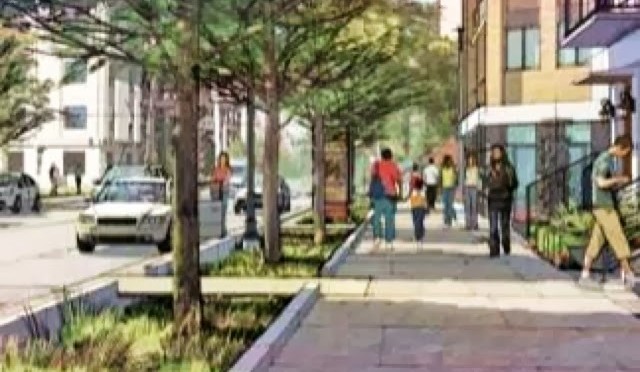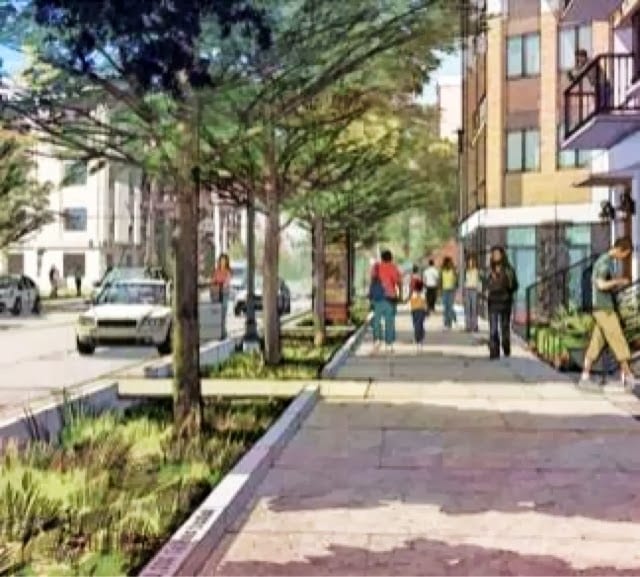Some fantastic news out of the Mayor’s office today…
Mayor Annise Parker Announces Visionary Complete Streets Policy for Houston
At the site of Texas’ first certified GreenRoads projects in Midtown, Mayor Annise Parker today unveiled a transformative new approach for Houston streets that will accommodate the needs of all users, not just those behind the wheel. The mayor’s Complete Streets and Transportation Plan is meant to provide safe, accessible and convenient use by motorists, public transit riders, pedestrians, people of all abilities and bicyclists. The new policy, detailed in a draft executive order from the mayor, will be achieved over time as improvements to existing roadways and redevelopment occur.
“This executive order is a major first step forward,” said Mayor Parker. “Many groups have worked hard to get us to this point, including The Complete Streets Coalition, Scenic Houston, AARP and BikeHouston. I am thankful for their input and steadfast commitment. Houston is a city that embraces its diversity. This Complete Streets policy applies the same approach to our mobility system by meeting the diverse needs of all Houstonians while also creating more accessible and attractive connections to residential areas, parks, businesses, restaurants, schools and employment centers.
The Complete Streets and Transportation Plan recognizes that all streets are different. The function of the road, current and projected adjacent land use and travel demands, availability of right-of-way, community input and the level of vehicular, pedestrian and bicycle traffic must all be considered in decisions regarding enhancements. The ultimate goal, where appropriate, is walkable and bike-friendly neighborhoods with amenities such as trees and landscaping, public art and street furniture.
“As we work to build a healthier community, it is more important than ever to reimagine our approach to streets, sidewalks, pedestrian crossings, public transit, bike trails and lanes,” said Mayor Parker.
Mayor Parker intends to sign the executive order following a City Council briefing on the plan. Houston is joining other cities that are already utilizing a Complete Streets approach including Chicago, Baltimore, San Antonio, San Diego, Sacramento, Seattle, Portland, San Francisco and New Orleans as well as the U.S. Department of Transportation and numerous state transportation agencies.
The Plan will build upon and utilize tools such as the city’s Mobility Planning already underway. It will create new definitions found in the city’s Major Thoroughfare and Freeway Plan Policy Statement and the Infrastructure Design Manual. The city’s Rebuild Houston program will also ensure that all future roadway construction utilizes the principals contained in the mayor’s Complete Streets Executive Order.
The City of Houston’s Planning and Development Department, Public Works and Engineering Department and METRO will be responsible for administration of the plan. There will be annual reporting to City Council to ensure transparency and accountability.
Houston’s transportation infrastructure spans 640 square miles and consists of 6,000 center lane miles of streets, 1,100,000 traffic signs, 2,450 signalized LED intersections, 1,600 school zone flashers, 180,000 streetlights and 1,800 freeway lights.
As someone who frequently rides a bicycle on Houston’s streets, I can attest that this is sorely needed. Some Houstonians may be skeptical of the need for such an “expensive investment”, but to the naysayers I issue a challenge… Go for a walk on a major thoroughfare like Westheimer or Richmond. Walk the sidewalk, or bike along the far lane. Then try that same activity on the Greenroads projects of Bagby or Pierce. Once you spend some time outside of the car and actually experience these places in human contact, the need for complete streets is obvious.

